Gary Larson, longtime artist behind famed syndicated newspaper, was known as a genius of the comic strip, routinely bringing power-packed laughs in pint sized form in the funny pages. In honor of his often absurd humor he placed into his entendres and puns, here are the 10 Far Side Punchlines That Prove Gary Larson Is A Genius At Word Play.
It takes a special kind of comedian to whip together a joke in a small space with limited use of language, and Larson’s ability to come up with some of the wittiest (and often silliest) examples of this discipline was often what made The Far Side such an indelible part of the cultural landscape. Here’s some of his more involved work, often highlighting a more psychological side to the mix, if not still refreshingly corny.
10
The Heartbreak of Remoras
February 22, 1986
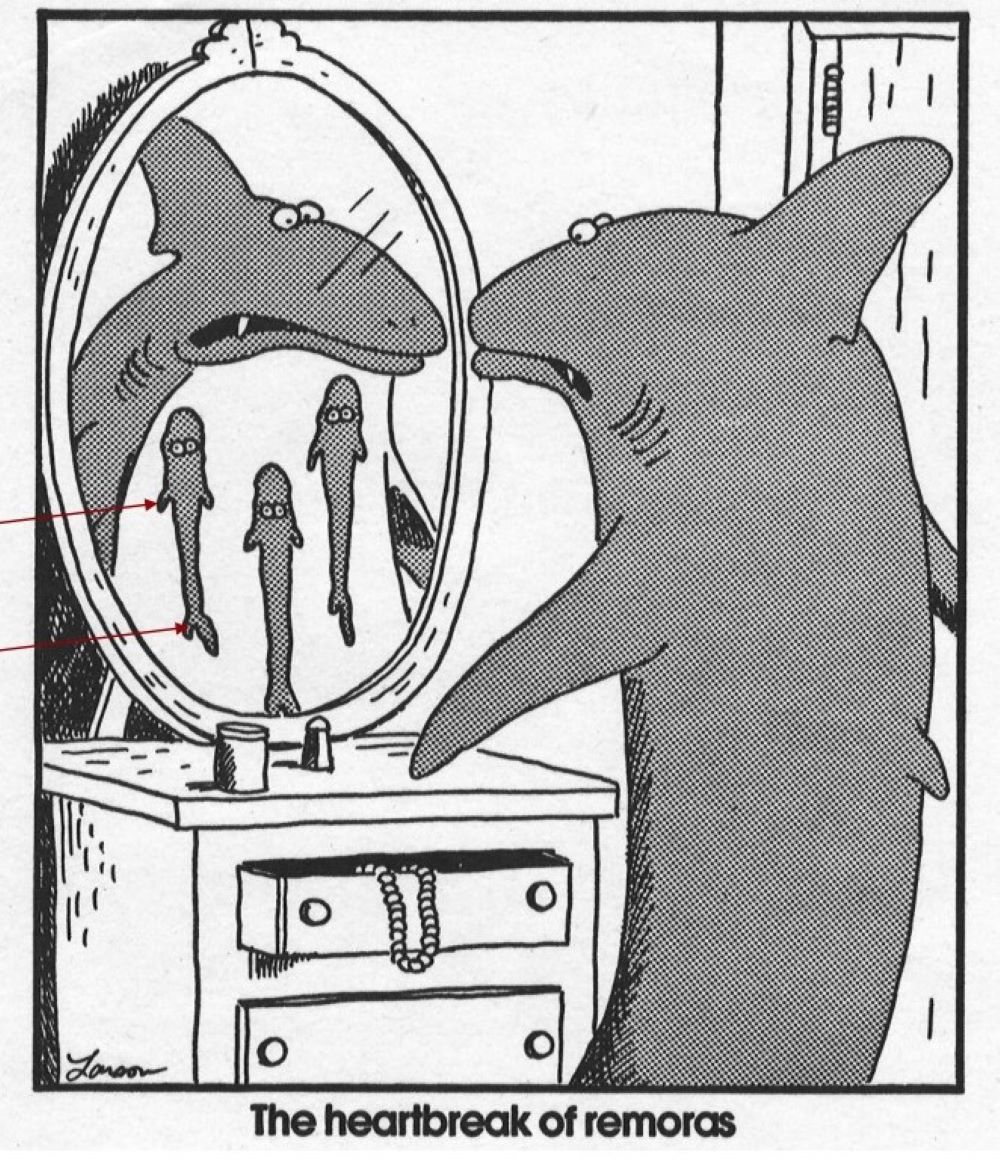
Going out on the dating scene can be stressful, and, as one unfortunate shark is finding out, sometimes it’s the small blemishes that present the biggest obstacles. A play on an old ad campaign for psoriasis medicine, the joke also involves a clever pun, namely “the heartbreak of remorse.”
Rather than being actual remorse this shark is feeling, for perhaps needing to cancel their date due to a flare-up of a chronic medical condition like psoriasis, instead the ascribed heartbreak can be laid upon the presence of remoras, or sucker fish, which stick themselves onto the underbelly of larger aquatic creatures.
9
Edgar Finds His Purpose
January 30, 1986
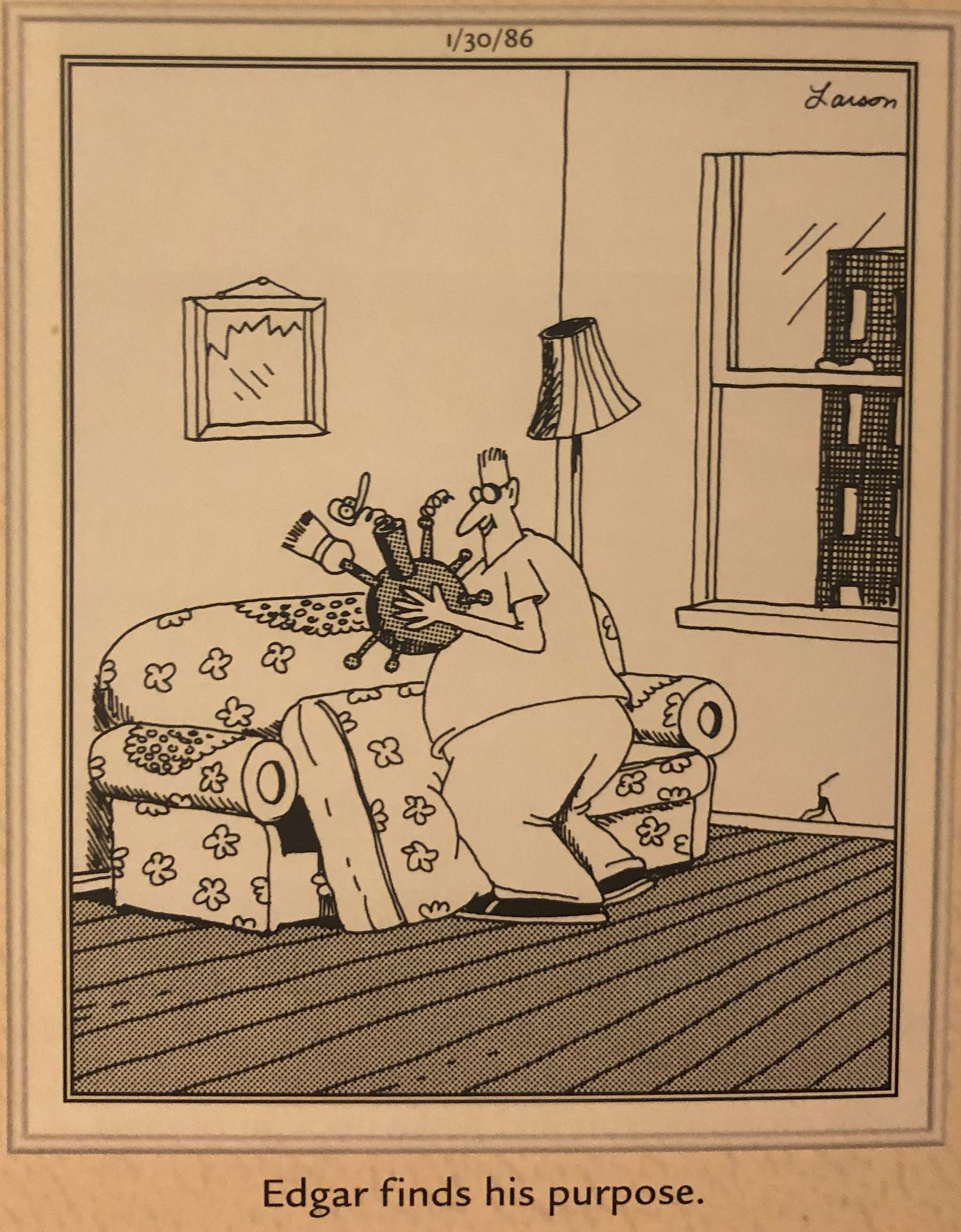
It’s a windfall day for Edgar in this iteration of The Far Side, as, while ruffling through his sofa cushions, he finally finds his purpose, most likely intended to mean his purpose in life. What is this thing? It’s hard to say. It has spokes on it like a jack or a submersible depth charge mine, a broom head which would seem to be too unwieldy to use, and what appears to be a jack-in-the-box spring with a duck’s head.
Whatever the case, Edgar appears to be overjoyed with this discovery, a soft expression of comfort dawning upon his face at the newfound clarity of his path of existence. Perhaps Larson is trying to say that peoples’ purposes can come from unexpected places and may appear strange and useless to others in a kind of utopian metaphor. Or maybe it’s that people find purposes in life that simply are strange and useless, and just don’t realize it. At least all Edgar had to do was search through his couch.
8
The Dawn of Man
May 8, 1981
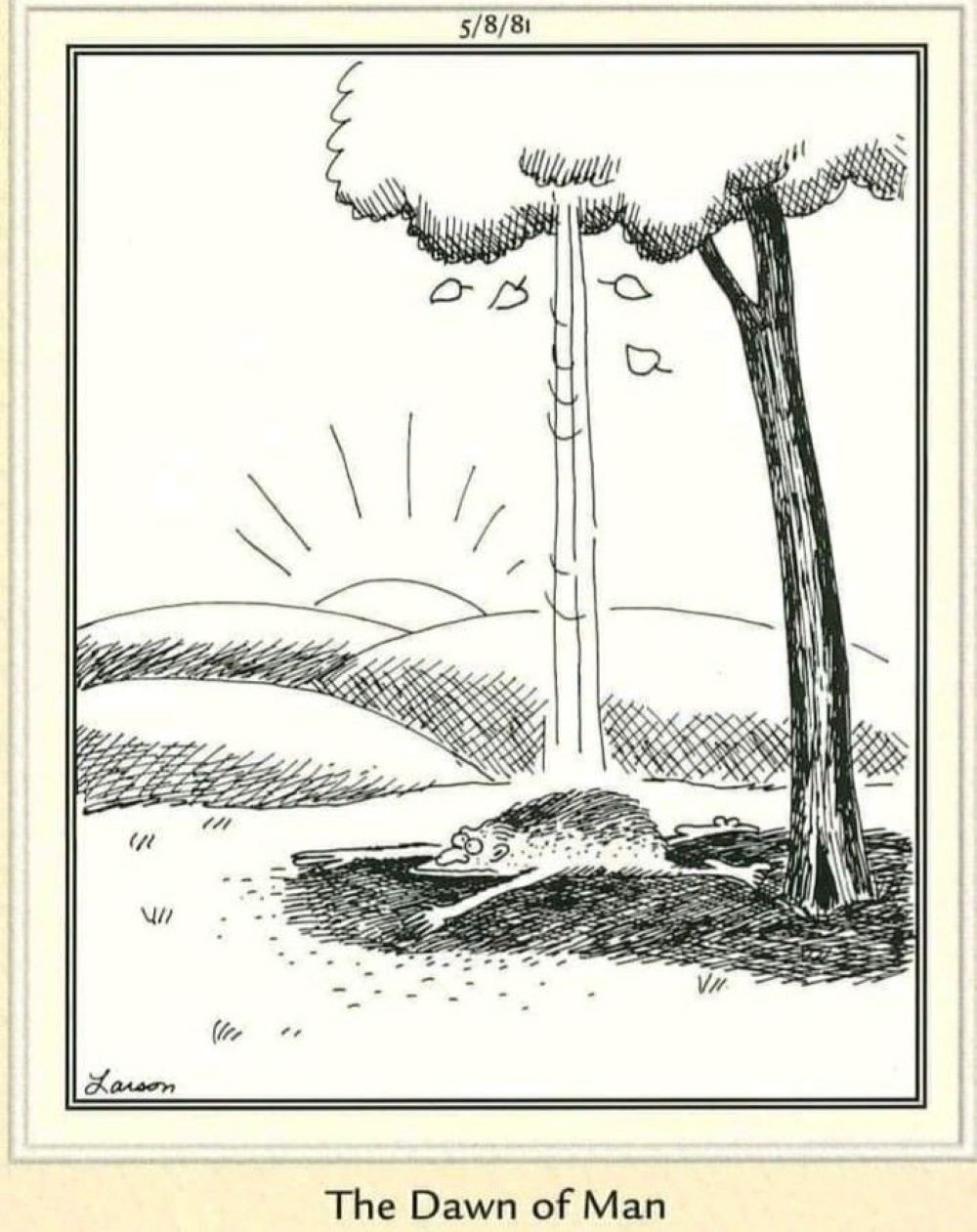
In a simply majestic pun, some kind of missing link between ape and man undergoes what can only be a quiet milestone for the evolution of mankind. One day, upon waking up, this primitive pioneer rolls off of his branch, descending from the trees both literally and metaphorically, and changes the direction of the species forever.
While more optimistic anthropologists might have hoped this would have been a more deliberate process, Larson here illustrates that this incredibly important episode was actually just a (most likely very painful) accident.
7
The Thundertooth
December 9, 1980
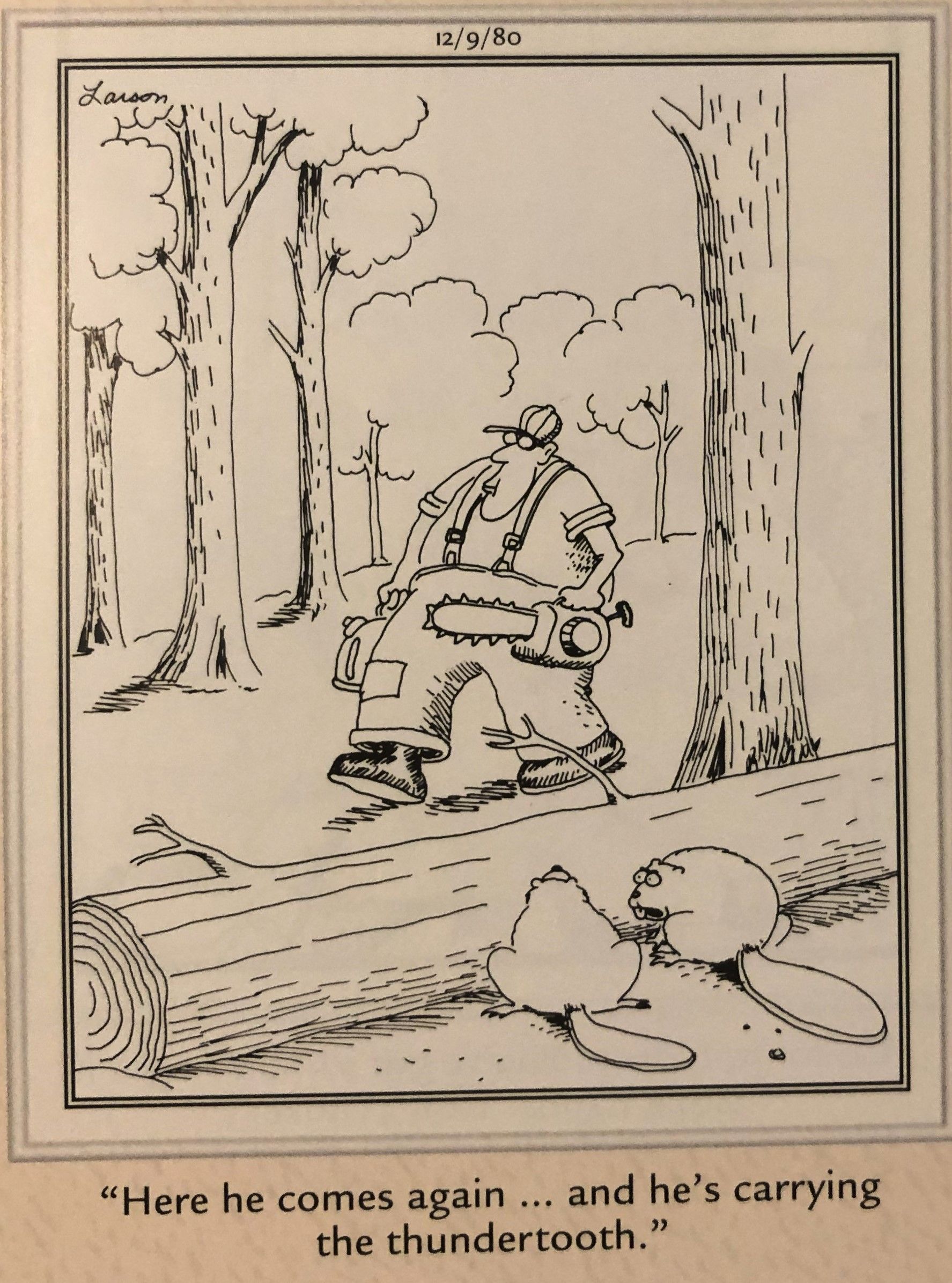
Two beavers hide behind a log as a mysterious stranger traipses through their woodland domicile, a foreboding sight to say the least. His tool, which they dub, “the thundertooth,” posits to the audience his purpose: he is a lumberjack sent to clear some forest.
To the beavers, however, he takes on the trappings of an urban legend, armed with an unearthly and powerful device, the name of which sends shivers through the spines of all those who possess only regular-toothed wood-gnawing capabilities. The commonplace demeanor of the thundertooth-wielding workman generates only more absurd humor.
6
The Restless Life of the Nomad
October 11, 1984

Nomadic cultures were a major way of life for thousands of years, as groups of people traversed what would later become the civilized world in search of sustenance, resources and opportunity. Larson here imagines their “restless” life, a poetic term used to describe their constant movement and lack of a permanent home, with the concept that they are simply so restless by temperament that they will go out and wander aimlessly around for hours on end as part of their day-to-day activities.
Making a tacit analogy to the act of hiking, the situational humor of this particular bit derives from the acknowledged pointlessness of this “nomadic” behavior, yet the husband’s need to engage in it nonetheless out of the need to adhere to the “restless” way of life simply for the sake of it.
5
Why People Named Buddy Hate to Drive
August 10, 1988
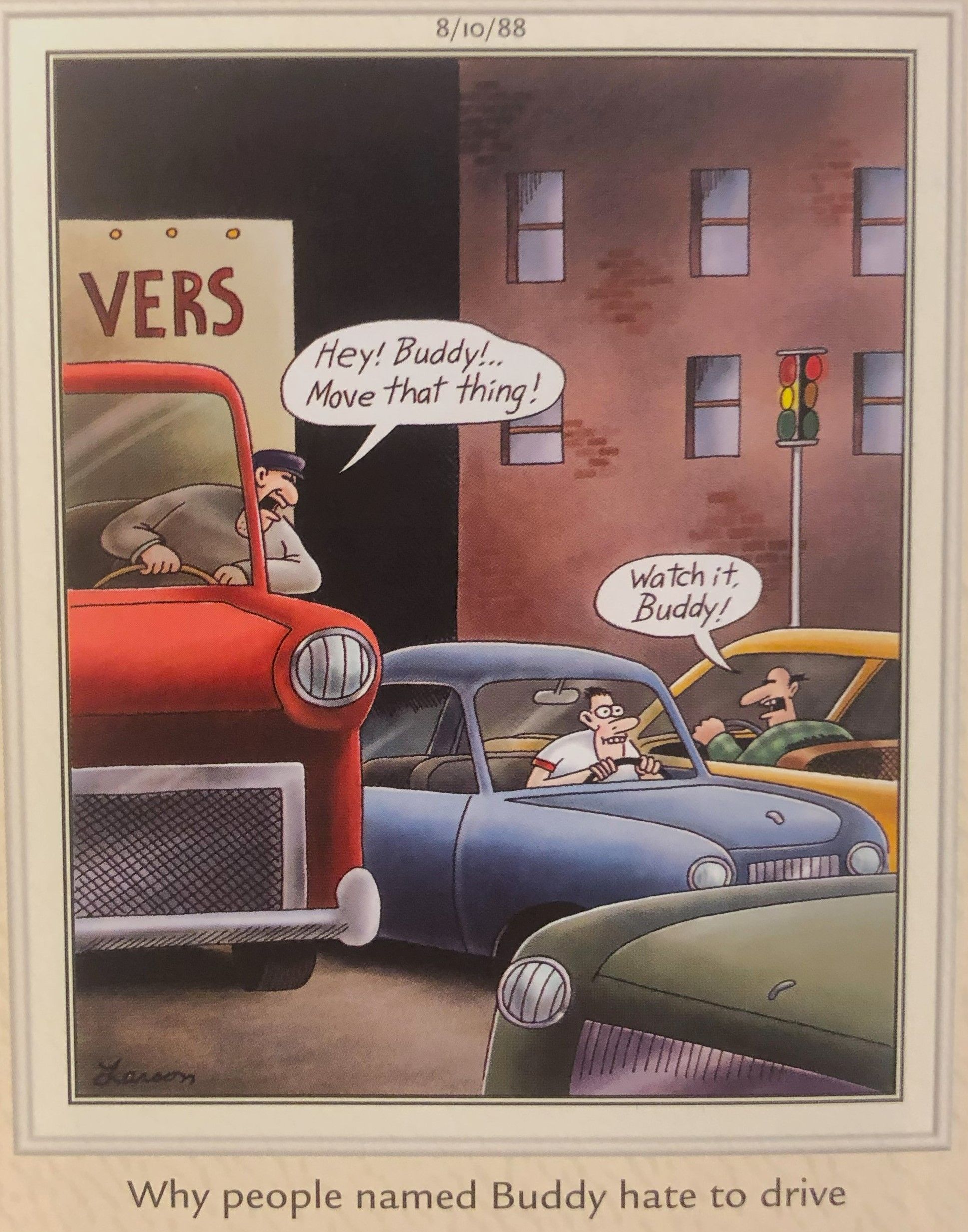
In this panel, a clearly anxious man named Buddy attempts to simply navigate his life as, in shockingly personal fashion, strangers continuously scold him by name. The muted terror of his predicament, as Buddy tries to maintain composure in the face of the too-familiar onslaught of invective he must face on a daily basis, is ultimately the source of a kind of sublime surreal humor.
Most people named “Buddy” probably wouldn’t care if someone off-handedly called them by their name once in a while by coincidence. The Far Side paints this experience in a coat of existential dread faced by Buddy, in the sheer inescapability of his plight, in a brilliant if somewhat bleak take on the theme of alienation in modern times.
4
Giving Him the Duck
June 11, 1980
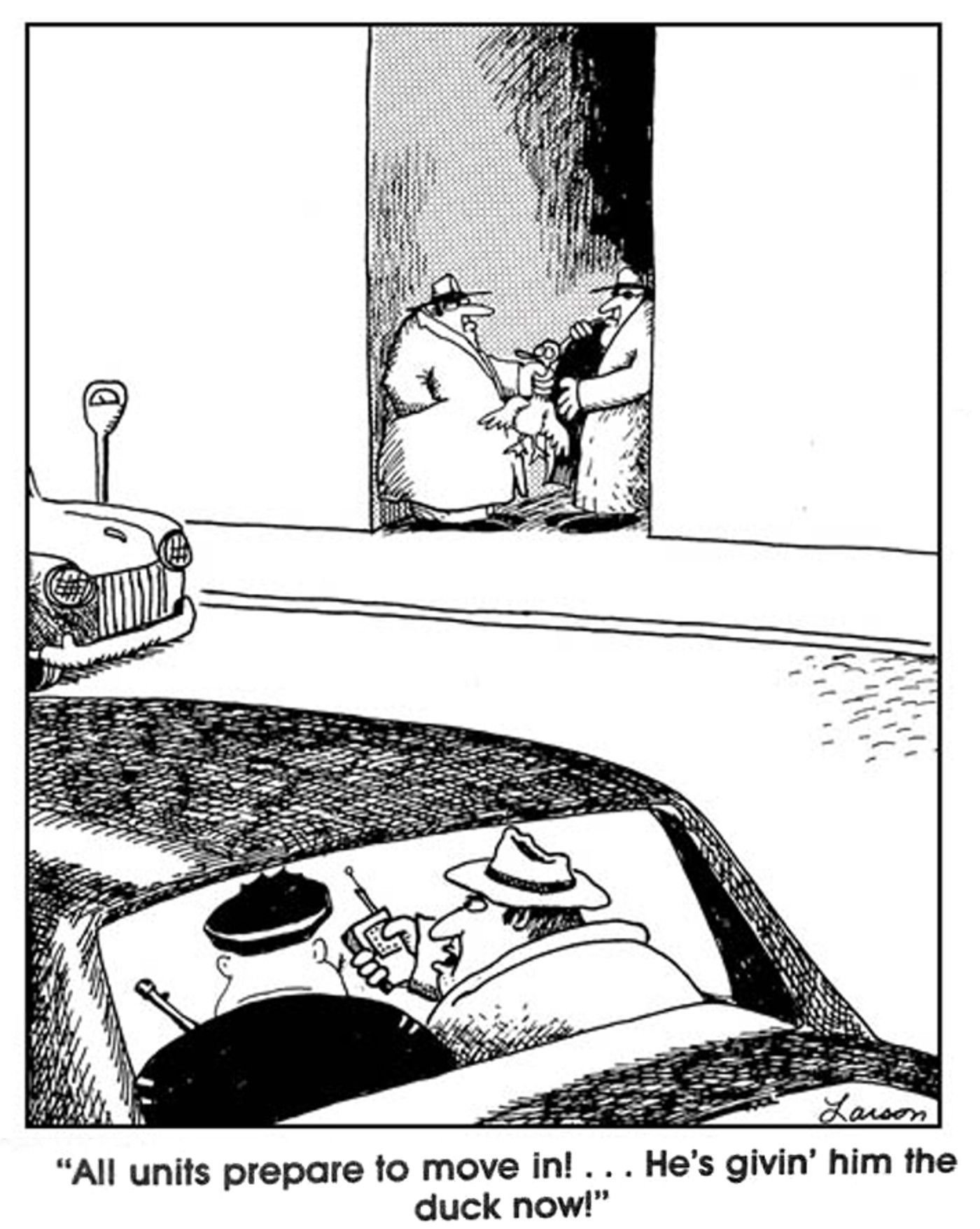
While The Far Side has its fair share of stupid puns, a few are so stupid they actually become clever. An intrepid band of law enforcement officers, led by a grizzled detective in plainclothes, proceed with their clandestine sting operation as the signal is given by their undercover agent. This signal, in marvelously corny fashion, happens to be the handing off of a duck.
Usually, when an undercover officer is giving their criminal quarry “the duck,” that means they’re skedaddling out of there so they won’t get caught in any resulting crossfire during a highly dangerous sting operation. The cleverness of the pun results from the intense absurdity of the image, the handing off of a live waterfowl in a densely-populated urban area, and serves as an early demonstration of Larson’s core “Far Side-esque” humor.
3
Don’t Press Me, Mitch
November 16, 1994
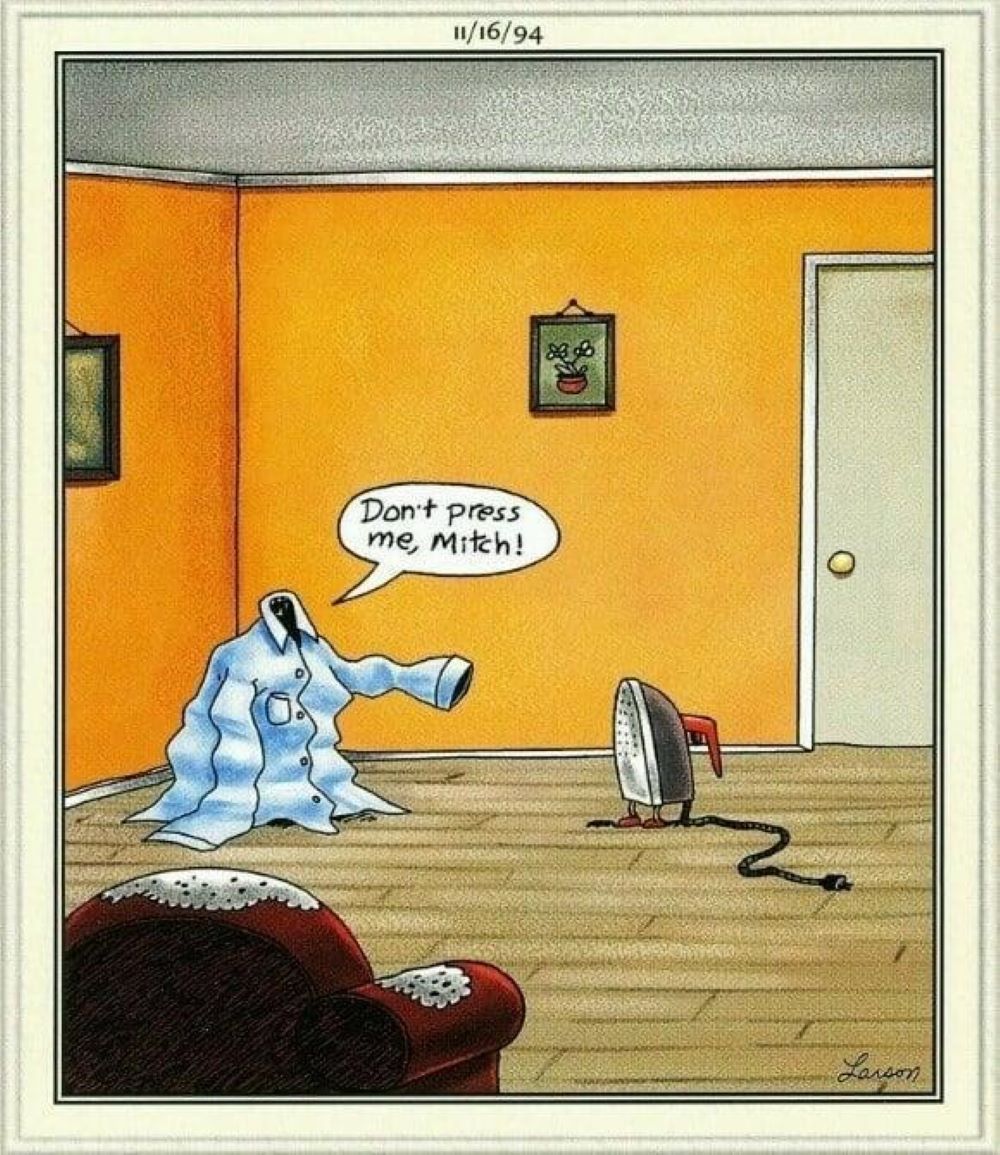
Sometimes tempers can flare in volatile situations between roommates with clashing personalities, and, in no doubt an emotionally fraught affair, an unnamed talking shirt attempts to assert himself against his roommate Mitch, an animate steam iron. Obviously, being an iron, it’s possible that Mitch might simply be trying to straighten his wayward roommate out, help him work out some of the finer wrinkles in Mitch’s argument, but the unnamed shirt, probably worn out after a hard day, just doesn’t want to hear it.
A lesson in the need to practice empathetic interpersonal communication even in heated disagreements and a reminder that even the best of intentions can fall flat.
2
How to Draw Cartoons
Jul 19, 1990
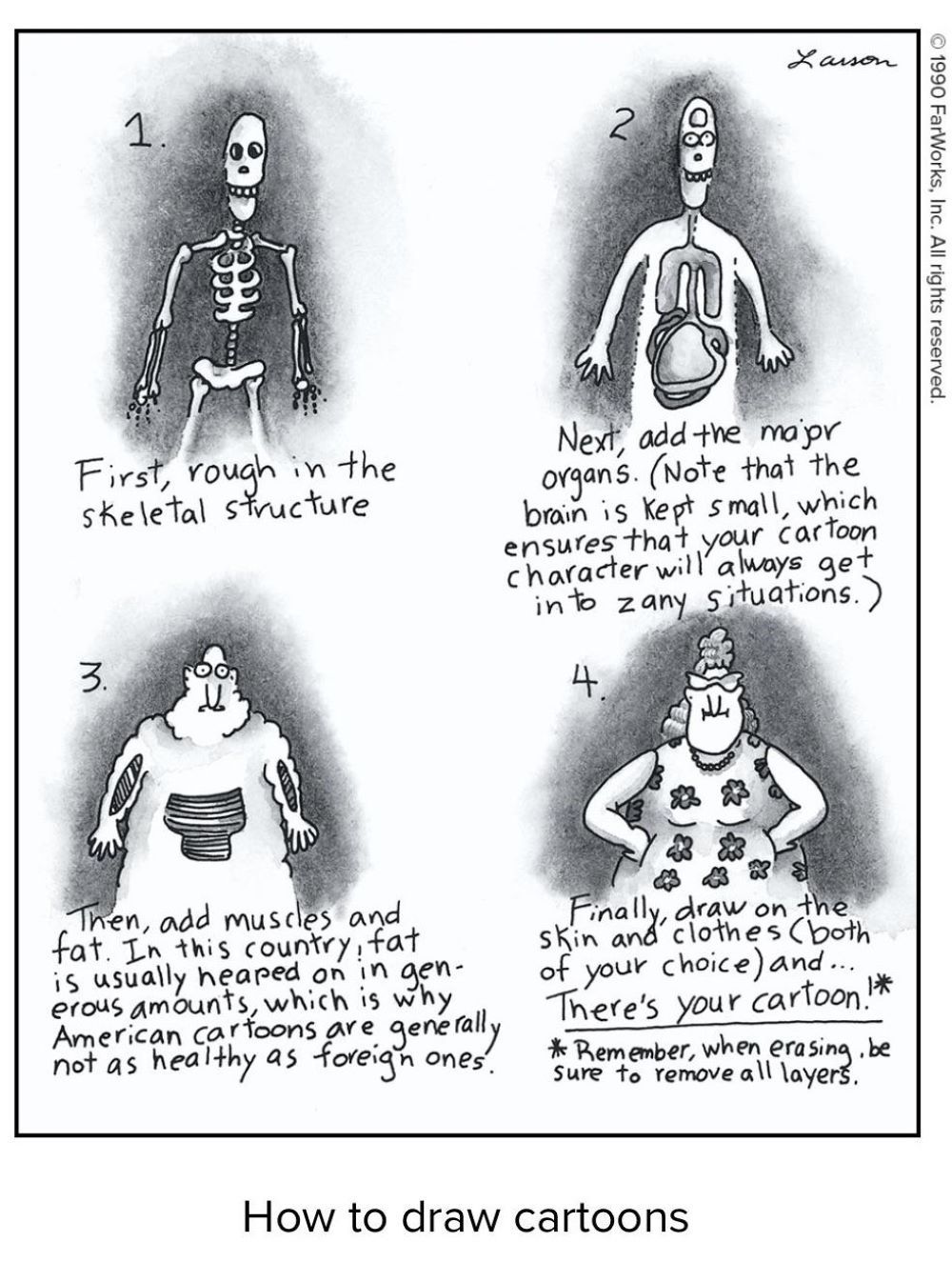
Perhaps one of Larson’s finest examples of tongue-in-cheek humor, The Far Side gives a satirical tutorial on the complex art of cartooning in this completely useless step-by-step. Following Larson’s instructions, celebrated cartoonist though he may be, will assuredly not allow his perspective students to easily replicate his method, and may instead result in clearly foreseeable frustration.
Ironically, however, if one instead derives an indirect message from the silliness of how these instructions unfold, one may indeed learn how to properly deploy clever humor when devising potential cartoon ideas.
1
The Later is Back
January 1, 1986
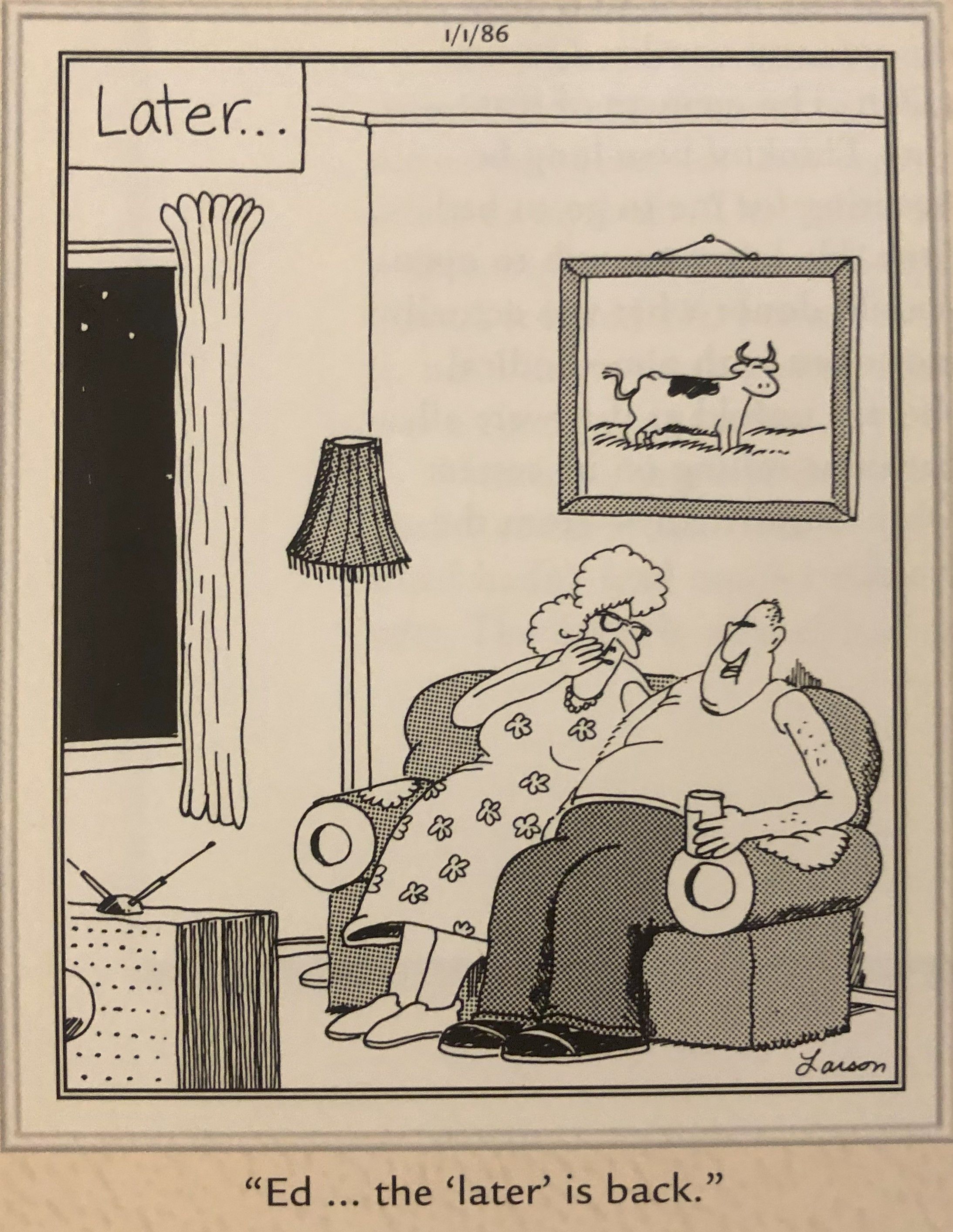
The Far Side always dabbled in the humor of the surreal, and, in a nondescript house, a woman’s paranoid nightmare comes to life when a caption appears floating above her head in her living room. Her husband, Ed, seems nonplussed about the development. Aside from the meta-humor of a cartoon character not realizing they are living in a cartoon, the play on words of a “later” being “back” is actually a pun on the shortened form of the farewell, “see you later,” that being someone simply saying “later.”
So, when a person sees someone they told they would see later when it is later, as in when they come back, in some ways that means the “later” is back. An amazingly stupid wordplay brought about by Larson’s nudging of the fourth wall, a perhaps the finest example of Gary Larson’s genius wordplay in The Far Side.





